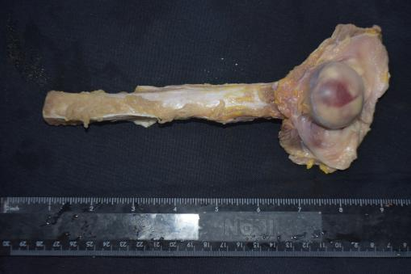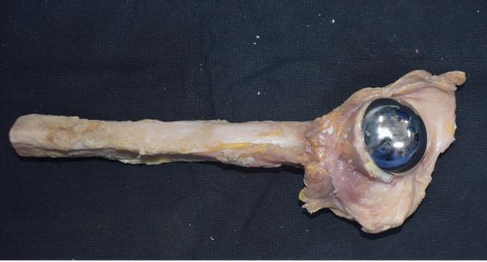The Journey of a Bone: From Donation to Healing Lives
- Aifa Moulana
- Feb 21
- 5 min read
Bones are the foundation of our bodies. They help us stand, move, and protect our organs. But sometimes, people lose part of their bones due to accidents, diseases like cancer, or conditions like osteoporosis. In such cases, doctors replace missing bone with a bone graft - a donated bone from another person.
Bone donation is less talked about than organ donation, but it is just as important. A single bone donor can help multiple people regain their ability to walk, stand, and move freely. But how does a donated bone travel from a donor to a patient? Let’s explore this fascinating journey step by step.
Step 1: The Gift of Bone Donation – Who Can Donate?
Many people know about kidney, liver, and heart donations, but bones can also be donated. When a person passes away, their bones, skin, and tissues can still be used to help others heal.
How is a Bone Donor Selected?
Not everyone can donate their bones. Before donation, a medical team carefully checks if the donor’s bones are safe to use.
Screening Process:
Medical History Check – Doctors review the donor’s medical past to ensure they didn’t have conditions like cancer or osteoporosis that might affect the bone’s quality.
Blood Tests – To ensure the donor was not infected with diseases like HIV, Hepatitis B & C, or syphilis, which could be passed on to the patient.
Physical Examination – The body is checked to make sure the bones are strong and in good condition.
Microbiological Assessment – Doctors check for bacterial or fungal infections that could be present in the donor’s tissue.
If the donor meets all the safety standards, the bone donation process begins.
Step 2: How is the Bone Removed? (Bone Retrieval Process)
Once a donor is approved, the bone retrieval process must happen within 12 to 24 hours of death (or up to 48 hours if the body is refrigerated).
Which Bones Are Donated?
Some of the most commonly donated bones include:
✔ Thigh bone (femur) – The longest and strongest bone in the body.
✔ Shin bone (tibia) – Helps support body weight.
✔ Upper arm bone (humerus) – Important for arm movement.
✔ Pelvis – Used in reconstructive surgeries.
How is Bone Collected Respectfully?
Bone donation is done with the utmost care so that the donor’s body looks natural after the procedure:
Prosthetic rods or fillers are placed where the bones were removed.
The area is stitched up and covered neatly so that no one can tell a donation has taken place.
The body is returned to the family looking as natural as possible.
Once removed, the bones are placed in sterile containers, packed on ice, and transported to a bone bank for further processing.
Step 3: How the Bone is Processed and Made Safe for Patients
Once the bone reaches the bone bank, it must be cleaned and sterilized before it can be given to a patient.
Cleaning the Bone
The bones are washed carefully to remove soft tissue, fats, and blood. They are also soaked in antibiotic solutions to kill bacteria.
Sterilization – Killing Germs
Even after cleaning, tiny bacteria or viruses might still be present. To ensure the bone is 100% safe, it goes through one of these sterilization processes:
Gamma Radiation – Uses high-energy rays to kill bacteria and viruses.
Ethylene Oxide Gas (EO Gas) – A chemical gas that removes germs without damaging the bone.
Supercritical CO₂ Processing – A modern technique that removes bacteria while keeping the bone’s structure strong.
Preserving the Bone for Future Use
After sterilization, the bones are stored in one of three ways:
Fresh Frozen (-80°C) – Kept in freezers to preserve its strength and flexibility.
Freeze-Dried (Room Temperature) – Water is removed from the bone so it can be stored without refrigeration.
Cryopreserved (-196°C) – Stored in liquid nitrogen for long-term use.
Each bone gets a unique tracking number, so it can be matched with the right patient later.
Step 4: Transporting the Bone to the Patient
How Do Doctors Get the Right Bone for the Patient?
When a doctor needs a bone graft for a patient, they send a request to the bone bank. The bank selects a matching bone based on:
✔ The patient’s size and needs.
✔ The type of graft required.
✔ The quality and sterility of the bone.
The bone is then carefully packed and transported to the hospital.
Preparing the Bone for Surgery
Before the operation, the bone might need some final steps:
1. Freeze-Dried Bones – Soaked in water or blood plasma to rehydrate.

2. Frozen Bones – Slowly warmed to the right temperature.
3. Custom Shaping – The doctor trims and shapes the bone to fit the patient’s body.

Step 5: Bone Transplant Surgery – The Final Step
During the operation, the donated bone is placed into the patient’s body. The doctor may use:
Plates and screws – To hold the bone in place.
Surgical cement – To attach the bone in joint surgeries.
Natural healing techniques – Where the patient’s body gradually accepts the new bone.
Healing and Recovery
After surgery, the patient’s body slowly replaces the donated bone with their own bone cells. This process is called "creeping substitution" and can take several months to years.
The Importance, Challenges, and Need for Bone Banks
Bone banks are essential for providing life-saving bone grafts to patients who have lost bone due to accidents, cancer, or medical conditions, yet many struggle to receive the treatment they need due to a limited number of bone banks and the challenges involved in maintaining them.
A single donor can help multiple people, but the process is complex—strict medical screening, time-sensitive retrieval within 12 to 24 hours after death, and advanced sterilization and storage at extremely low temperatures make bone banking a specialized and resource-intensive field. Fresh frozen bones must be stored at -80°C, while cryopreserved grafts require liquid nitrogen (-196°C), making the process expensive and difficult to manage.
Transporting and matching the right bone to the right patient also requires precision, as bones must be kept at the correct temperature and properly sized for each recipient. Even after a successful transplant, some patients take longer to heal, and in rare cases, the body may reject the graft. Despite these challenges, bone banks are crucial in modern medicine, helping patients regain mobility, heal from injuries, and restore their quality of life.
However, many parts of the world lack sufficient bone banks, leaving patients without access to the grafts they need. Expanding the network of bone banks, investing in better storage and transport systems, and increasing awareness can help bridge this gap and ensure that more people receive the life-changing treatment they deserve. Strengthening bone banks means giving more patients a second chance at movement, independence, and a better future.




































